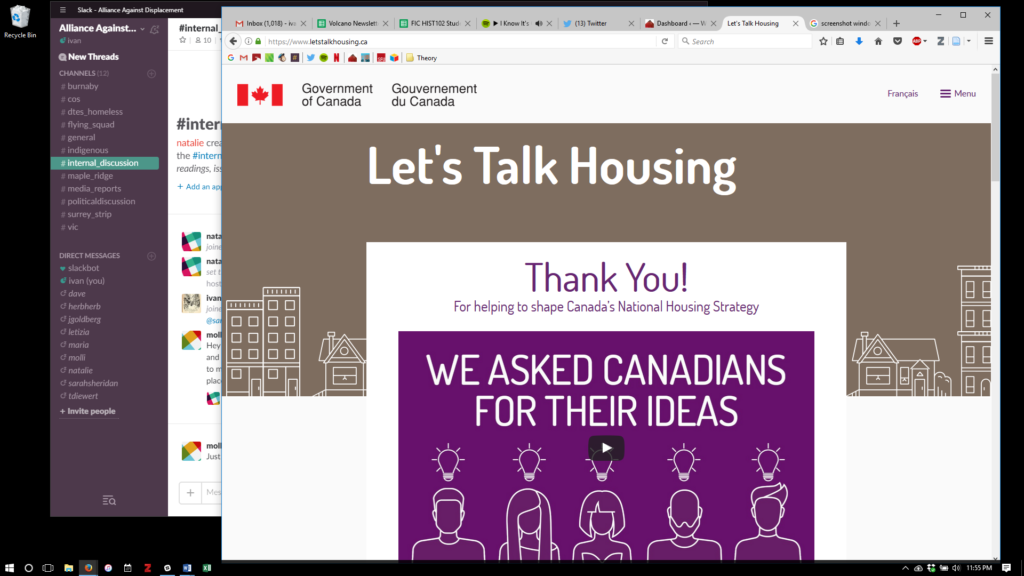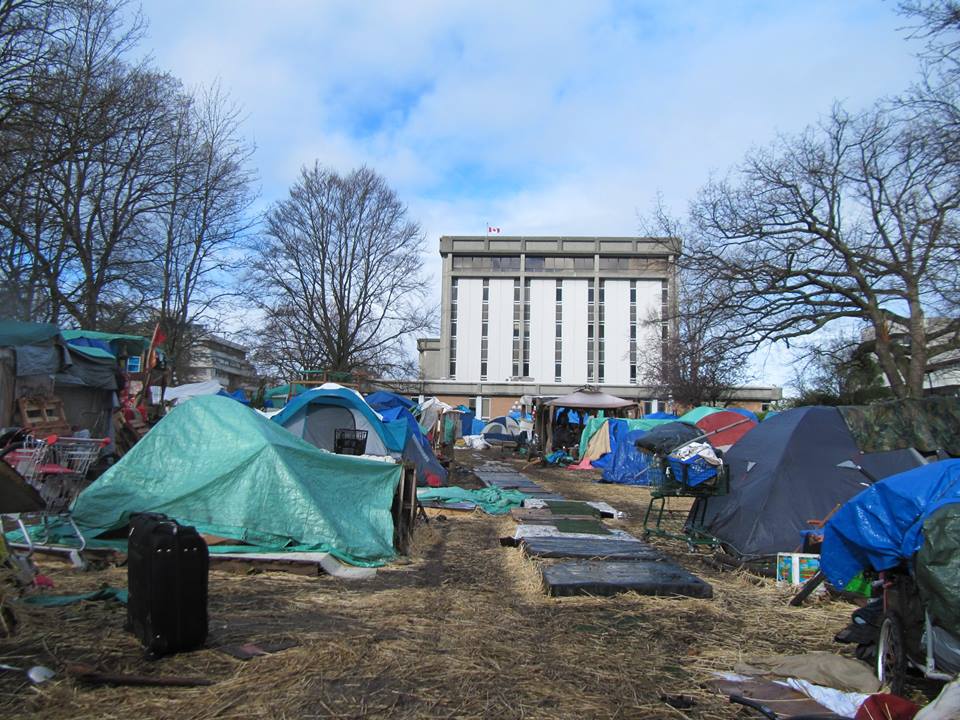
Federal government’s message to homeless people: get a good tarp and sleeping bag and prepare to die young

On March 22nd, the Federal government released the 2017 budget. The budget commits $11.2 billion to housing over 11 years. Mainstream media has celebrated the housing budget. Huffington Post’s headline was “Liberals Dedicate Billions For Affordable Housing” and Global News called it a “Big investment in affordable housing.“ Mayor Gregor Robertson says he is “particularly pleased to see a commitment of $11.2 billion earmarked for housing nationally.”
However, none of these articles actually analyze what the $11.2 billions investment (over 11 years) means in terms of actually addressing the housing crisis and meeting the needs of the tens of thousands of people in desperate need of housing. Is it really a “big investment” in affordable housing? Will it even be enough to house the people who are currently homeless?
Breaking down the housing budget
To most people, $11.2 billion sounds like a lot of money, but when you consider that it is divided over 11 years, that it has to cover every region in the whole country, and that it has to cover homeless shelters, market rent supplements, off reserve Indigenous housing, maintaining and repairing existing social housing as well as the construction of new social housing – it suddenly becomes a whole lot less.
For example, if you divide the $11.2 billion over 11 years, it boils down to only $1 billion a year to be spent across the whole country. If the $1 billion was all spent on building new social housing, it would be enough to build about 5,000 social housing units across the country, or about 650 social housing units in BC. But this is only if it is all used towards the construction of new social housing, which is very unlikely given the state of disrepair of the existing housing stock. Canadian Centre for Policy Alternatives (CCPA) estimates that $1 billion is barely enough to maintain and repair the existing social housing stock across the country, let alone build new social housing.
While most of this funding was announced in the fall plan, the 2017 budget provides more detail on the specifics of the spending. Out of the $11.2 billion, the budget sets aside approximately $3.2 billion over the next 11 years to provinces and territories to support each province’s “key priorities” for affordable housing. According to the budget, these priorities may include the construction of new affordable housing units, the renovation and repair of existing housing, rent subsidies and other measures to make housing more affordable. This investment amounts to $290 million per year for the whole country or $38 million per year for BC. This would in turn boil down to about $5 million for Vancouver, or about 25 social housing units if it was all spent on building new social housing. The BC Liberals have declared repeatedly that they prefer market rent supplements to building social housing, so how much of this money would go towards social housing construction is an unknown.
Out of the $11.2 billion, only $2.1 billion over 11 years is earmarked for tackling homelessness. This boils down to $190 million per year for the whole country, $25 million a year for BC and only $3 million for Vancouver which would only be enough to house about 15 homeless people, or about 0.8% of the 1847 people counted as homeless in Vancouver in 2016. But even this money need not go to building housing for homeless people because the provinces are free to spend it on shelters or market rent supplements.

Housing for Indigenous people
Budget 2017 proposes to invest $225 million over the next 11 years to provide financial support to housing providers serving Indigenous people not living on-reserve. According to the budget, his funding will provide assistance for building repairs, take over funding for housing units previously supported by the former federal Urban Native Housing Program as well as to “encourage development” of new housing. This boils down to about 20.4 million per year across the whole country or a mere 102 new social housing units per year across the whole country. To put this number into perspective: 102 housing units would only house about a fourth of the Indigenous people who were counted as homeless in Vancouver’s 2016 homeless count. That is if all the money was to be spent on building new housing, which it is not.
Budget 2017 also earmarks $300 million over the next 11 years to provide targeted support for northern housing, with most going to Nunavut. This funding will barely scratch the surface of the housing crisis in Northern communities. In Nunavut half of the population lives in social housing, and more than 3,000 households are estimated to be homeless and waiting for government-assisted housing. With higher building costs than southern Canada, an average $400,000 cost of building a unit, the $21.8 million Nunavut would get every year could only build only build 54 housing units a year if it it was all used towards the construction of new housing. But most of this money will be taken by existing housing that needs upgrades; about 4,000 of the existing housing units are deemed to be below housing standards, meaning they are either overcrowded or in need of major repairs or a combination of both.
What we really need
In 2016 federal minister Duclos conducted a cross-Canada survey of housing need. Although he stated that his primary concern was bringing housing ownership within reach for young professionals, he surely also learned about the housing needs of people at risk of homelessness. The housing budget should be calculated based on these numbers: what it will cost to build the housing units that are needed.
In BC, over 4,000 people are homeless in Metro Vancouver, but this is a gross underestimate which does not include hidden homeless, and the thousands of people at brink of homelessness: paying more than half of their income on rent, or living in inadequate or overcrowded housing conditions. There is not a province wide homelessness count, but in 2014 Social Housing Alliance estimated that there are 10,000 people at the brink of homelessness across the Province.
We also need to make up for the huge backlog in building social housing. In the early 1990s, with the onset of neoliberal austerity policies, the federal government almost withdrew completely from building and funding social housing. The Mulroney Progressive-Conservatives and Chretien Liberals downloaded responsibility for social housing to Provincial governments, which have hardly built any housing at all since. As a result, over 10,000 people are currently on the BC Housing waitlist in BC.
This means we need a minimum 10,000 social housing units built every year in BC, to house all homeless people, and to build away the social housing waitlist. Across the country, this means we need about 77,000 housing units per year. This would cost about $15 billion per year.
Most of these funds could be raised by closing tax loopholes which favour the 10% and 1% richest people in Canada. For example, taxing income from capital gains and investments at the same rate as employment income could bring in $10 billion a year. Over 90% of the benefit of this loophole on the personal income tax side goes to the richest 10% of income earners and 87% goes to the top 1%. The IMF has also estimated Canada could generate $12 billion annually by implementing a tax of just 1% on the net wealth of the top 10% of households.
Taken together this budget is an $11.2 billion, decade-long recipe for escalating homelessness and housing insecurity.
